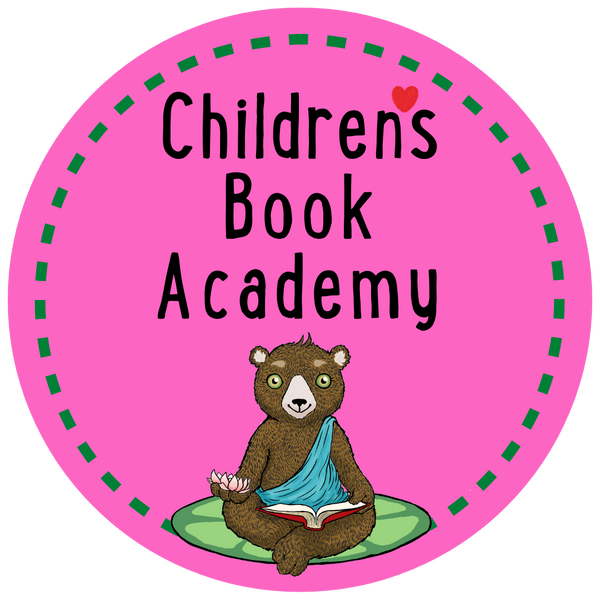Here are some tips on developing a portfolio attractive to a children’s book publisher:
-
Show a narrative sequence. As picture books tell stories, it’s important to show the narrative sequence in the artwork to push the storyline forward and make readers want to turn the pages.
-
Have a lot of children or animals. The main characters of picture books are usually children or animals, so it’s important to show you can draw these characters well.
-
Showcase actions and expressions. It’s crucial to demonstrate that you can illustrate the same character consistently in different scenarios while telling a story. Vary the character’s gestures, expressions, mood, and angle in the pieces.
-
Include spot illustrations and full-page illustrations because there will be various layout arrangements in a picture book.
-
Separate different styles. If you have different styles, some of which are suitable for children’s books and others for other genres of illustrations, you can separate them on different pages or tabs.
Art complements the stories of picture books. There are various art styles to be considered, but it is essential to choose the one that best suits the particular book’s theme. Here are a few art styles a publisher will consider while choosing the artist for a picture book:
• Watercolor Art Style Watercolor art style expresses emotions in a better way. If the story is emotional and quiet, give it a touch of loose watercolor illustrations.
Anime Art Style
Stories full of action and suspense are best complemented with anime illustrations. The anime art style can be both two- and three-dimensional. An anime artist creates characters with exaggerated effects to make the scene more dynamic.
Fantasy Art Style
Children are much more imaginative than adults, which is why they love reading and exploring fictional characters. Fantasy illustrations are excellent for children's books that are based on imagination only. It can also create a mythical atmosphere.
Whimsical Art Style
Picture books that convey a humorous story are popular among kids. Adding a touch of whimsical art to the story can multiply the fun of reading. Whimsical art is a carefree illustrating style based on vibrant colors. Artists draw cute and groovy characters that make the reader happier.
There are many other styles to adopt when illustrating a children's book, but make sure that the art style explains the story. As an illustrator, I’ll also consider adopting different styles to better suit different stories. For instance, combine emotional stories and anime characters with a gradient watercolor background and characters with strong black strokes. By considering the art style and story type, an artist may better understand and illustrate the book and even grow and develop new styles.
Establishing the Perfect Rhythm Between Words and Visuals
There should be a perfect rhythm between the writing and illustrations. Once the writer is done with the picture book’s words, it is time to acquire the right art style. After adopting a specific art style for the children's book, it’s time to get creative.
The editor breaks down the book’s words and divides them into all the pages. The page plan enables the designer to know which sentence lies on which page. In addition, it helps the illustrator comprehend every page’s need to create an ideal visual design.
For instance, in The Whole World Inside Nan’s Soup, written by Hunter Liguore and illustrated by Vikki Zhang, instead of drawing the girl standing in front of the kitchen table when the text says, “I stood on my tiptoes to see,” Vikki used several panels to show the process of the plant growing and put the girl beside the plant she planted and showed her trying to touch the fruit. It’s a creative way to interpret the story beyond the words.
Another example is in Milo’s Moonlight Mission, the text reads, “Take offs. Blast offs. For Milo and his crew, the sky is the limit.” It could be interpreted as the child was playing with a toy rocket in an everyday setting. But the illustrator Petronela Dostalova painted an outer space setting, and the brilliant artwork brought the audience right into Milo’s imagination.
Picture book publishing is a process that requires collaboration and teamwork. Being an author and illustrator helps me communicate and understand our team.
A compelling plot, good writing and editing, attractive design, matched illustrations, and high-quality printing are all critical factors to a successful picture book. This equilibrium is maintained by teamwork. Everyone, including the art director, artist, editor, illustrator, writer, and designer, need to be fully involved in the publishing process.
My Monsterpiece, by Amalia Hoffman, was a great example of teamwork. After the book was sold to Yeehoo Press, Amalia had many conversations with our editor, Brian Saliba. They brainstormed over the phone and via email. Then, Amalia went through a couple of rounds of revisions. When the story was tight and solid, Amalia created a dummy based on the new text, which was quite different from the original text.
The editor and the writer work on the text. Then, the illustrator and the art director work on the illustration part. The designer and the art director will make each page of the children's book more attractive and engaging. There will be multiple revisions in each step, so communication is the key to making successful picture books.
In A Word
Being an author and illustrator helps me understand the business better and gives me the chance to think creatively—not only the book itself but also the whole collaboration process and all areas of publishing. To be the best advocate for your book, you have to know about contracts, subsidiary rights, the target audience, writing, art style, graphic design, marketing, publicity, sales, and so on. The goal is to support the author and the rest of the book team, including the illustrator, designer, and marketing team, in telling a compelling story. I love to see each step of how a book takes shape from plain text to a finished book. I always marvel at the journey of making picture books. You plant a seed and work hard to nurture it, and it surprises you months later with flowers and fruits!
More about Helen H. Wu
Helen H. Wu is a children’s book author and illustrator of over 20 picture books, as well as a translator, graphic designer, and publisher. Helen is the Associate Publisher of Yeehoo Press, a Los Angeles based children’s book publisher. Being fascinated by the differences and similarities between cultures, Helen loves to share stories that can empower children to understand the world and our connections. Born and raised in Hefei, China, Helen moved to the US in her 20s. Currently, she resides in sunny Southern California, with her family and two kids.
Her new picture book, TOFU TAKES TIME, illustrated by Julie Jarema, will be published by Beaming Books in spring 2022.
Yeehoo's website: https://yeehoopress.com/
Yeehoo's Twitter: @yeehoopress
Yeehoo's Instagram: https://www.instagram.com/yeehoopress/
Helen Wu on Twitter: @HelenHWu
Helen Wu on Instagram: https://www.instagram.com/helenhwu/
Helen Wu's website: https://helenhwu.com/
















